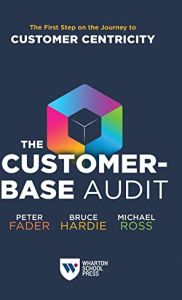
The Customer-Base Audit
The First Step on the Journey to Customer Centricity
Recommendation
If you lack clarity about the number of unique customers you have, the health of your customer base and who your highest value customers are, you’re not alone, say Peter Fader, Bruce G. S. Hardie and Michael Ross. Many businesses have a 2D view of their profits and revenues, and fail to properly consider the additional and vital dimension – customers. Learn the basics of conducting a customer-base audit, which will empower you to spot problems and opportunities before they arrive while gaining a more complex understanding of the customer behaviors behind the numbers.
Summary
About the Authors
Peter Fader co-founded Theta, a firm working to revolutionize finance through customer-based valuation, and the Frances and Pei-Yuan Chia Professor of Marketing at the Wharton School of the University of Pennsylvania. He is the co-author of The Customer Centricity Playbook (2018). Bruce G. S. Hardie is a marketing professor at the London Business School. He develops tools to analyze marketing and customer data. Michael Ross is the senior vice president of retail data science at EDITED, and a non-executive director at Sainsbury’s Bank, N Brown Group and Domestic & General. He has co-founded businesses such as Dynamic Action and eCommera, and served as a consultant at McKinsey & Company.


















Comment on this summary